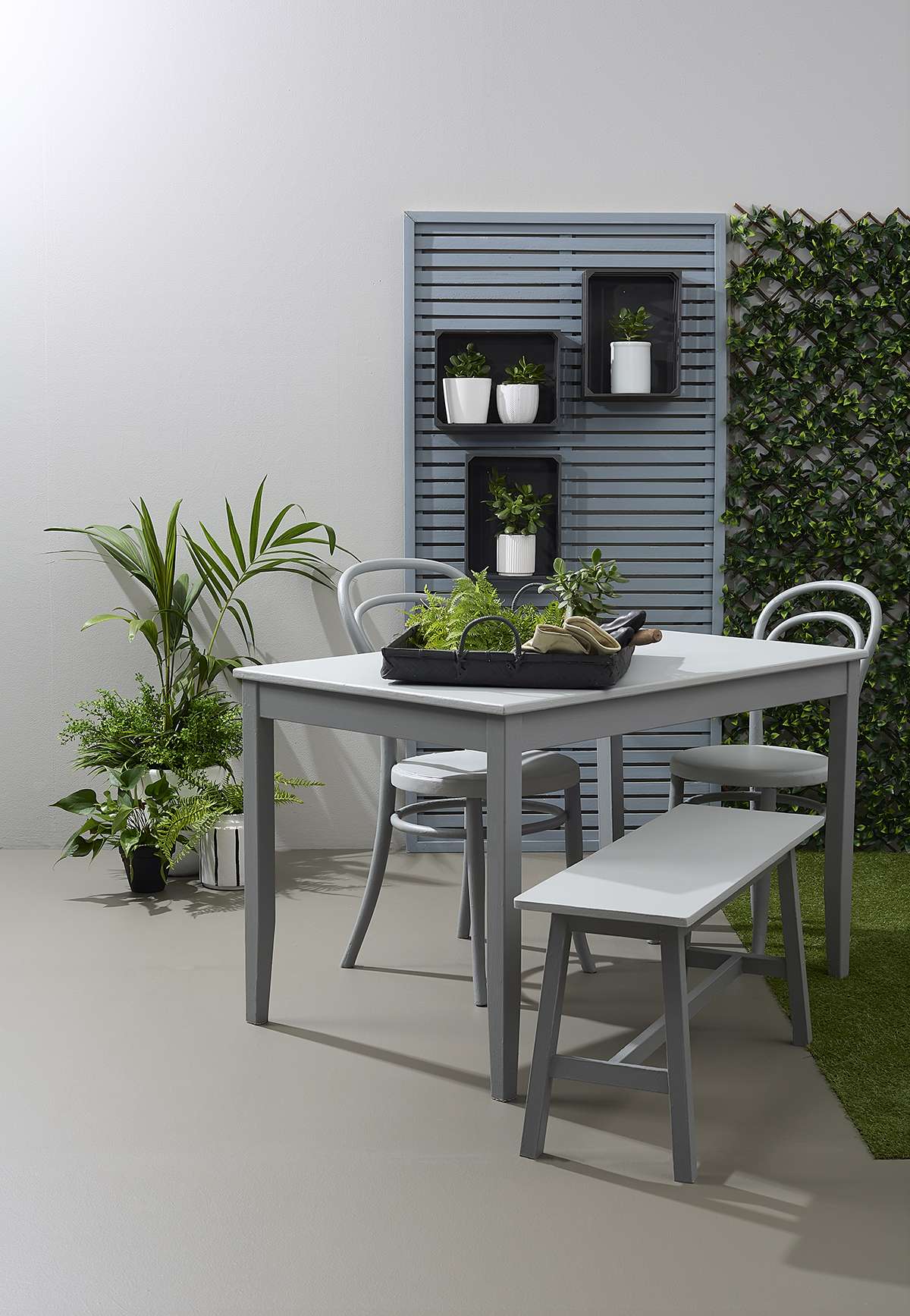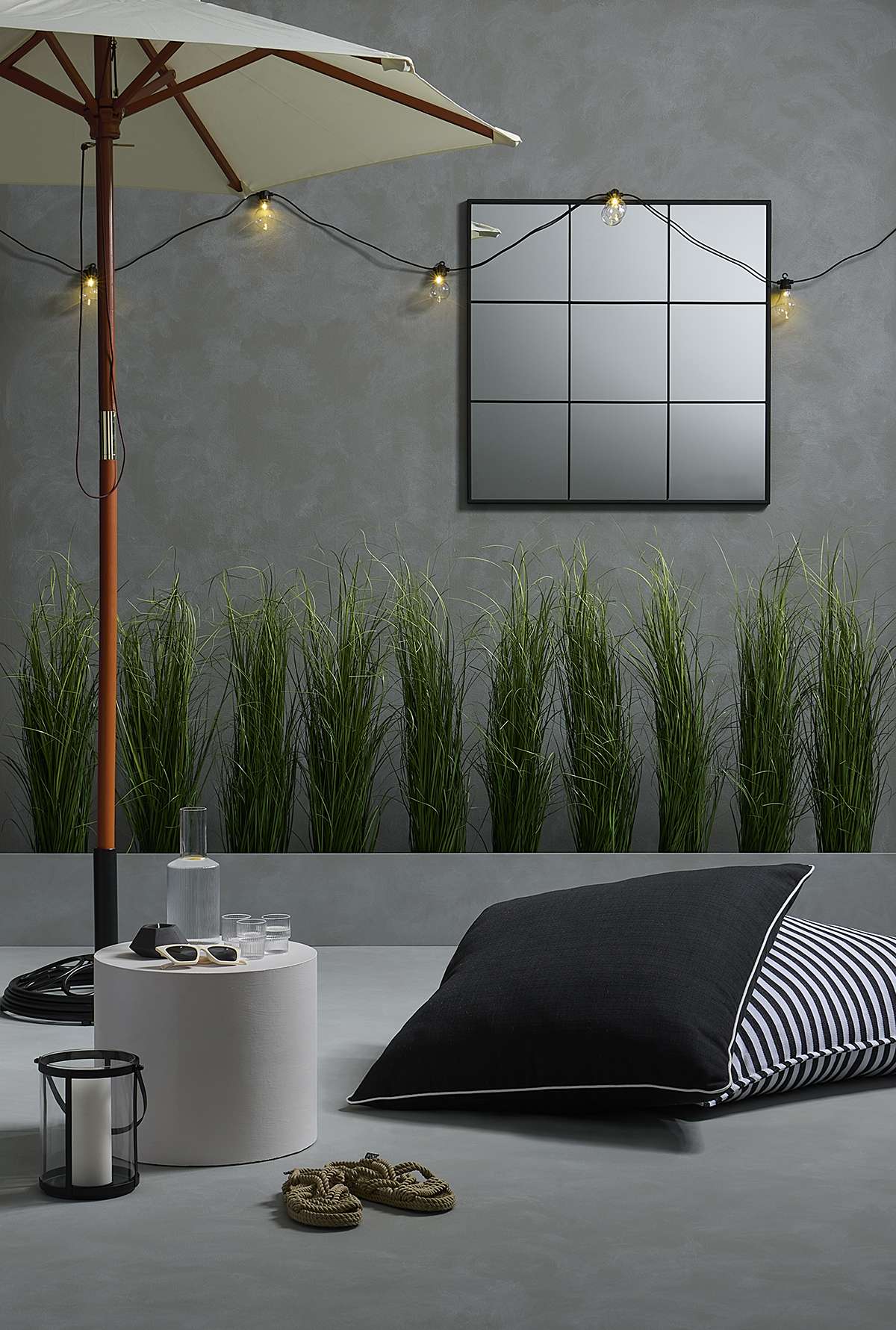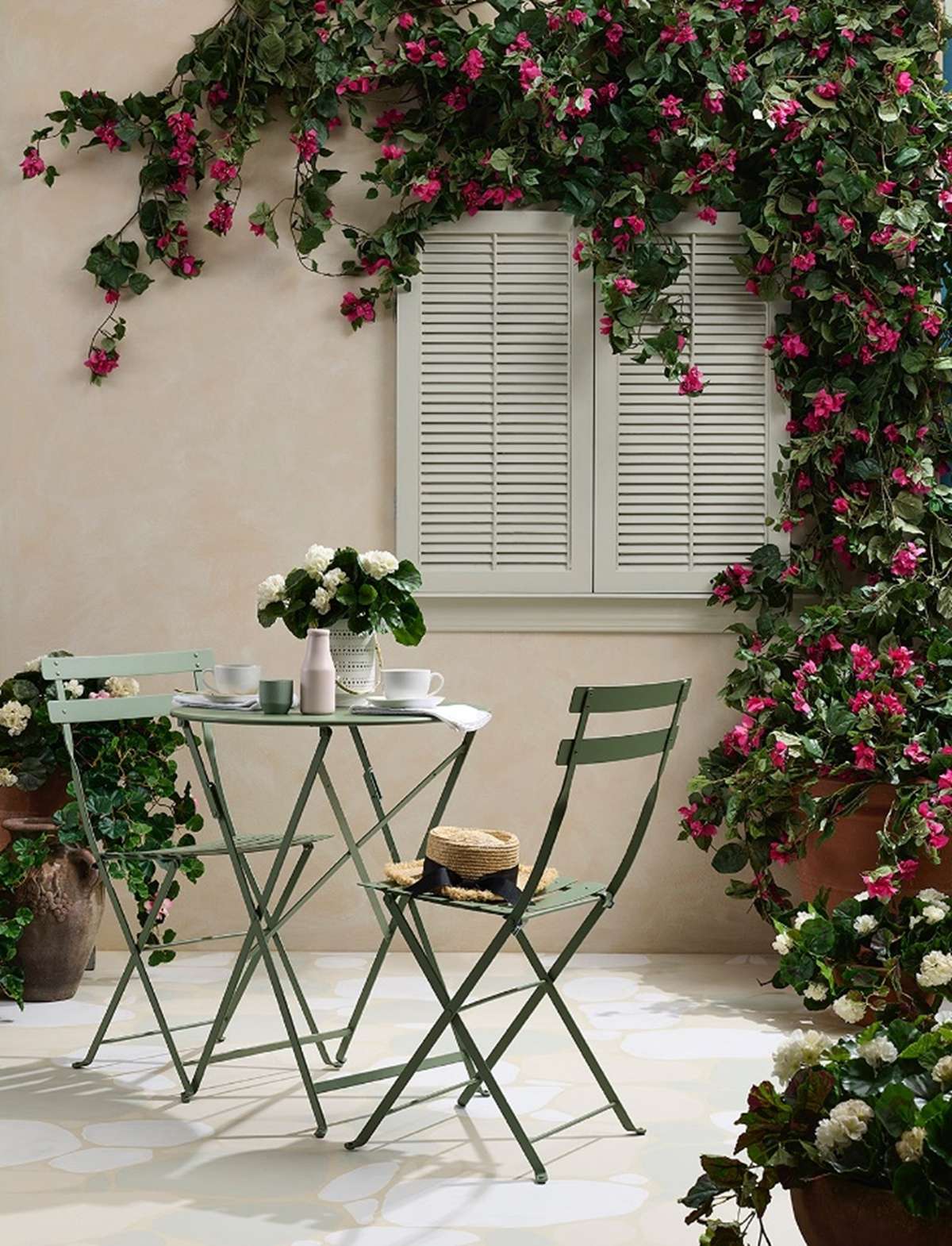If your home’s exterior is looking on the tired side, or simply needs a lift, a new coat of paint might be just what the doctor ordered to boost your kerb appeal.
Perhaps you’re ready for a new exterior colour on your home? If so, where do you start when it comes to choosing the right hue?
Start by looking at your home’s surroundings; are you in a coastal, urban or lush bush-like setting? Resene colour consultant Brenda Ngatai says the landscape can certainly influence your exterior colour choice, guiding you towards a shade that will work beautifully with what’s around you.

Start your property search
Create cohesion with your interior colour scheme by painting your exterior walls in a neutral, then using an indoor hue as an accent colour outside. Wall painted in Resene Quarter Friar Greystone, floor in Resene Triple Friar Greystone and trellises in Resene Friar Greystone and Resene Gunsmoke, wine boxes in Resene Colorwood Iroko (large, stained) and Resene Colorwood Equilibrium (small, stained) and Resene Zeus (paint version). Ceramic pots (with moneybag plants) in Resene Quarter Sea Fog, cane tray in Resene Zeus, table in Resene Gunsmoke (base) and Resene Delta (top), bench in Resene Gunsmoke (base) and Resene Delta (seat), Bentwood chairs in Resene Gunsmoke (base and backs) and Resene Delta (seat) and planters in Resene Zeus, Resene Sea Fog and Resene Alabaster with pinstripes in Resene Nero. Lavender, pansies and purple kale from Kings Plant Barn. Project by Megan Harrison-Turner, image by Bryce Carleton.
“If your home is in the bush or down the side of a hill, or if your neighbouring homes are new townhouses, this often means more shade with less sun, so can feel cooler,” Ngatai says. “Therefore, a warmer exterior colour scheme could be the preference.
“If your home is on top of a hill or in open flat spaces, it will no doubt get all-day sun from all directions, so a cooler colour or even dark colour scheme could be the preference.”
While paying attention to your surroundings and your tastes when choosing your colour, it's also worth making note of the current paint trends, especially for resale value.
“Twenty years ago, the exterior popular colour schemes were beige tones,” she says. “Ten years ago, it moved to grey tones. Today, it is still grey tones but has moved again into the light greys and with some colour in the undertone.” Ngatai recommends Resene Iron, a cooled soft understated light, clear grey, Resene Eighth Lemon Grass, a peaceful silver/grey/green neutral and Resene Double Sea Fog, a classic greyed pavement white.
Remember, you can add more than one colour to your exterior, opting for a complementary hue on your window frames and trims for visual interest. This could be done in a bright bold colour, but a subtle choice can be equally impressive. “Complementary and accent colours give personality, balance and interest, to any colour scheme,” Ngatai says. “Colour has an emotional impact, it can give inspiration, it can remind us of the good old days when things just felt so much simpler. The right colour scheme can bring so much joy to our lives; who doesn’t want that feeling!”
Two different types of cladding make it very easy to use a two-way colour scheme, she says. “If there’s timber weatherboards, these can be painted in a light colour, and if there’s concrete brick/block these can be painted in a complementary darker colour.”

Evoke the textured effect of Mediterranean-style stucco with paint, adding cushions and shade to create a go-to space on sunny days, ready to host friends and family at any time. Wall, floor and planter box painted in Resene Half Tapa with weathered concrete effect painted in Resene FX Paint Effects medium mixed with Resene Half Atmosphere, round plinth table in Resene Half Blanc and geometric tealight holder in Resene Half Bokara Grey. Umbrella, umbrella stand and mirror from Briscoes, grasses and garden lights from Mitre 10, bottle and glasses from 10 Curated, outdoor floor cushions from Freedom, speaker from Allium, faux plant from Adairs, shoes from Gathered & Co, sunglasses from Cotton On. Project by Melle van Sambeek, image by Bryce Carleton.
“If the cladding is all the same type, and you’re wanting to use a two-way colour scheme, establish a starting point and finishing point, of where each colour will go and it needs to be balanced in its appearance. Otherwise, it might better and easier to consider using only one colour, which has depth and personally, such as Resene Half Inside Back or Resene Quarter Baltic Sea. Sometimes one interesting and modern colour can look far better than a two-way colour scheme.”
If white is your preference take note that Resene Black White is at the top of Resene’s list of 20 most popular whites and neutrals. Dark colours might meet your taste more, however, in which case Ngatai suggests finding out what your cladding type is, and whether it can handle dark colours. “Some aren’t ideal, you can ask the manufacturer of the cladding whether there are any restrictions on colour. Resene has the CoolColour system for dark paint and stain colours for exteriors; this system helps hugely to help reduce heat absorbed by dark colours.”
So when you’ve chosen your colour, what is the best way to check it visually suits your home and its environment? By looking at your colour at different times of the day as the natural light alters, you can get a true sense of the colour’s nature. “I always tell my customers to try a Resene testpot of the colour. You can paint it straight onto the cladding, but you would be more informed by painting the colour out on an A2 (large) piece of white cardboard, making sure to paint two coats. Use up all of the Resene testpot. With this sample on cardboard, you can freely move it around to different areas, sunny areas, shaded areas, corners etc. View it in the morning light, midday light and afternoon light. This easy exercise should tell you whether this is the right colour for your exterior that you will love.”
Don’t forget to extend your paint colour onto your garden or storage shed and letterbox too. This helps complete the overall look, Brenda says.
For overall visual unity, blend your exterior scheme with your interior. If you do this well it will work to great effect in summer when you have the doors open to embrace the indoor/outdoor flow. “Most homeowners want that connection, and given, most of our homes have an outdoor deck/patio or pergola for summertime entertaining, this is usually connected to the kitchen/dining rooms.

Take your cue for an exterior colour from your home’s surrounding garden, blending in with the floral hues. Extending this further into your outdoor furniture will bring a sense of cohesiveness that is hard to beat. Wall painted in Resene Half Canterbury Clay with Resene FX Paint Effects medium mixed with Resene Eighth Canterbury Clay and Resene Double Spanish White. Shutters and windowsill in Resene Kangaroo, cobbled patio floor in Resene Half Canterbury Clay, Resene Eighth Canterbury Clay, Resene Double Spanish White, Resene Blanc, Resene Paris White and Resene Half Spanish White, large amphora vase in Resene FX Faux Rust Effect and other vases in Resene Soothe, Resene Pewter and Resene Alabaster. Table and chair from Jardin. Project by Annick Larkin, image by Bryce Carleton.
“Often for the homeowner, the interior colour scheme needs to relate to the exterior colour scheme ideally in a harmonious way, an option is to work with a family of colours, such as the Resene Sea Fog family; Resene Triple Sea Fog can be used as your exterior colour, with Resene Sea Fog as your interior wall colour. These soft off-whites are in perfect harmony, they have the same tinters, just the darker strengths have more.”
Now that you’ve selected the ideal colour, you can get ready to apply it. If you’re painting a new home give it a thorough clean to ensure the surface is ready. Next, apply a primer, the right one will depend on the building material.
Resene painting expert Jay Sharples says the best type of paint will also depend on the building material and the desired gloss level. “In general, use Resene Lumbersider Low Sheen, Resene Sonyx 101 (semi-gloss) or Resene X-200 (weathertight membrane). With new-builds, it pays to check if there are any local authority requirements around colours, also if there are any building material LRV (light reflectance value) requirements. Some materials will have stipulations around the LRV percentage.”
You’ll need to prepare an existing house just as well, and Sharples recommends doing a lead test if it’s the first time you’ve painted your house and it's an older home or villa. “Your local Resene ColorShop can do this free of charge. Take in a paint flake sample, the sample needs to be around a 50-cent piece in size, and the shop will be able to do a test to see if the coatings contain lead. The results of the test will influence the ways you can prepare the areas for painting.” Or buy a lead-test kit from your Resene ColorShop and you can test at home.
For more advice and ideas for painting your exterior, see your local Resene ColorShop or ask a Resene expert free online, www.resene.com/paintexpert.





